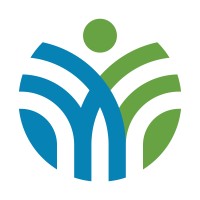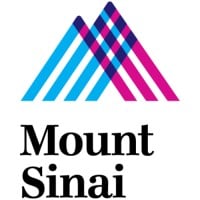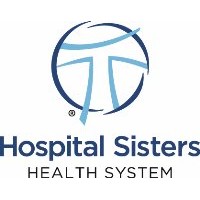Company Details
theapollohospitals
36,382
894,833
62
apollohospitals.com
0
APO_2230881
In-progress

Apollo Hospitals Company CyberSecurity Posture
apollohospitals.comDriven by the vision of its Chairman, Dr. Prathap C. Reddy, the Apollo Hospitals Group pioneered corporate healthcare in India. Apollo revolutionized healthcare when Dr Prathap Reddy opened the first hospital in Chennai in 1983. Today Apollo is the world’s largest integrated healthcare platform with over 10,000 beds across 73 hospitals, over 6000 pharmacies and over 2500 clinics and diagnostic centers as well as 500+ telemedicine centers. Since its inception, Apollo has emerged as one of the world's premier cardiac centers, having conducted over 300,000+ angioplasties and 200,000+ surgeries. Apollo continues to invest in research to bring the most cutting-edge technologies, equipment and treatment protocols to ensure patients have the best available care in the world. Apollo’s 100,000 family members are dedicated to bringing you the best care and leaving the world better than we found it.
Company Details
theapollohospitals
36,382
894,833
62
apollohospitals.com
0
APO_2230881
In-progress
Between 750 and 799

 Apollo Hospitals Global Score (TPRM)
Apollo Hospitals Global Score (TPRM)XXXX

Description: Apollo Hospitals, one of India’s largest private healthcare chains, faced a **247% surge in cyberattacks** in early 2025, with persistent threats targeting its hospital systems and patient portals. Cybercriminals exploited vulnerabilities in digital health records, leading to **disruptions in critical services**, including delayed surgeries, compromised diagnostic reports, and unauthorized access to patient data. The attack vector primarily involved **DDoS overloads and phishing scams targeting employee accounts**, crippling internal communication systems during peak operational hours. The breach resulted in **leaked medical histories of high-profile patients**, including politicians and business leaders, alongside the exposure of **sensitive treatment details of cancer and cardiac patients**. Emergency response systems experienced **12-hour outages**, forcing manual record-keeping and postponing elective procedures. While no direct fatalities were reported, the incident triggered **regulatory scrutiny** and a **mass patient lawsuit**, alleging negligence in safeguarding health data. The hospital’s reputation suffered irreversible damage, with a **30% drop in outpatient visits** in the following quarter. Recovery efforts involved **complete overhauls of legacy IT infrastructure**, costing an estimated **₹120 crore ($14.5M)** in remediation and legal settlements.


Apollo Hospitals has 33.33% more incidents than the average of same-industry companies with at least one recorded incident.
Apollo Hospitals has 56.25% more incidents than the average of all companies with at least one recorded incident.
Apollo Hospitals reported 1 incidents this year: 1 cyber attacks, 0 ransomware, 0 vulnerabilities, 0 data breaches, compared to industry peers with at least 1 incident.
Apollo Hospitals cyber incidents detection timeline including parent company and subsidiaries

Driven by the vision of its Chairman, Dr. Prathap C. Reddy, the Apollo Hospitals Group pioneered corporate healthcare in India. Apollo revolutionized healthcare when Dr Prathap Reddy opened the first hospital in Chennai in 1983. Today Apollo is the world’s largest integrated healthcare platform with over 10,000 beds across 73 hospitals, over 6000 pharmacies and over 2500 clinics and diagnostic centers as well as 500+ telemedicine centers. Since its inception, Apollo has emerged as one of the world's premier cardiac centers, having conducted over 300,000+ angioplasties and 200,000+ surgeries. Apollo continues to invest in research to bring the most cutting-edge technologies, equipment and treatment protocols to ensure patients have the best available care in the world. Apollo’s 100,000 family members are dedicated to bringing you the best care and leaving the world better than we found it.


Boston's Brigham and Women's Hospital (BWH) is an international leader in virtually every area of medicine and has been the site of pioneering breakthroughs that have improved lives around the world. A major teaching hospital of Harvard Medical School, BWH has a legacy of excellence that continues t

People at Allina Health have a career of making a difference in the lives of the millions of patients we see each year at our 90+ clinics, 12 hospitals and through a wide variety of specialty care services in Minnesota and western Wisconsin. We’re a not-for-profit organization committed to enrichin

University Health Network (UHN) is Canada's largest research hospital, which includes Toronto General and Toronto Western Hospitals, Princess Margaret Cancer Centre, the Toronto Rehabilitation Institute and the Michener Institute for Education at UHN. The scope of research and complexity of cases at

The Mount Sinai Health System is an integrated health system committed to providing distinguished care, conducting transformative research, and advancing biomedical education. Structured around seven hospital campuses and a single medical school, the Health System has an extensive ambulatory netwo

Encompass Health is the largest owner and operator of rehabilitation hospitals in the United States. With a national footprint that includes 158 hospitals in 37 states and Puerto Rico, the Company provides high-quality, compassionate rehabilitative care for patients recovering from a major injury or

Since 1875, the Hospital Sisters of St. Francis have been caring for patients in Illinois, Wisconsin and other locations in the United States and across the world. Today, Hospital Sisters Health System (HSHS) is a multi-institutional health care system that cares for patients in 14 communities in Il

Lifespan, Rhode Island's first health system, was founded in 1994 by Rhode Island Hospital and The Miriam Hospital. A comprehensive, integrated, academic health system, Lifespan’s present partners also include RI Hospital’s Hasbro Children's Hospital , Bradley Hospital, and Newport Hospital. A not

The University of Texas MD Anderson Cancer Center is one of the world's most respected centers devoted exclusively to cancer patient care, research, education and prevention. MD Anderson provides cancer care at several convenient locations throughout the Greater Houston Area and collaborates with co

Here at Home Instead, our mission is to expand the world's capacity to care. Across the globe we care for thousands of older adults, helping them live well at home for longer. In the UK, we’re reaching more older people than ever with an expansive network of 240 independently owned and operated
.png)
Mysuru: Krishnaraja MLA TS Srivatsa of the BJP, on Sunday, said united efforts are needed from citizens to make Mysuru a clean city.
A Kolkata businessman's organs have given a new lease on life to three individuals and restored sight to one. Following his declaration of...
New Delhi: A drug widely used to treat allergies may soon find a surprising new role — protecting the kidneys of people suffering from...
Shocking data reveals air pollution claimed one in seven lives in Delhi during 2023. Ambient particulate matter was the primary culprit,...
Chennai: AI-enabled scan machines are increasingly used by city hospitals to alert radiologists about problem areas in brain scans before...
Bengaluru: Oncologists in the city are urging women to pursue early screening and treatment for breast cancer, as a large number of patients...
India News: Akshay Kumar recounted his 13-year-old daughter Nitara's online sexual harassment experience, where a gamer built trust before...
Apollo Micro Systems Limited (AMSL) has signed MoUs with Sibersentinel Technologies Limited and Zoom Technologies (India) Private Limited to...
As part of the investment, the company will also establish an AI lab in the country, in addition to focusing on talent development.

Explore insights on cybersecurity incidents, risk posture, and Rankiteo's assessments.
The official website of Apollo Hospitals is https://www.apollohospitals.com.
According to Rankiteo, Apollo Hospitals’s AI-generated cybersecurity score is 791, reflecting their Fair security posture.
According to Rankiteo, Apollo Hospitals currently holds 0 security badges, indicating that no recognized compliance certifications are currently verified for the organization.
According to Rankiteo, Apollo Hospitals is not certified under SOC 2 Type 1.
According to Rankiteo, Apollo Hospitals does not hold a SOC 2 Type 2 certification.
According to Rankiteo, Apollo Hospitals is not listed as GDPR compliant.
According to Rankiteo, Apollo Hospitals does not currently maintain PCI DSS compliance.
According to Rankiteo, Apollo Hospitals is not compliant with HIPAA regulations.
According to Rankiteo,Apollo Hospitals is not certified under ISO 27001, indicating the absence of a formally recognized information security management framework.
Apollo Hospitals operates primarily in the Hospitals and Health Care industry.
Apollo Hospitals employs approximately 36,382 people worldwide.
Apollo Hospitals presently has no subsidiaries across any sectors.
Apollo Hospitals’s official LinkedIn profile has approximately 894,833 followers.
Apollo Hospitals is classified under the NAICS code 62, which corresponds to Health Care and Social Assistance.
No, Apollo Hospitals does not have a profile on Crunchbase.
Yes, Apollo Hospitals maintains an official LinkedIn profile, which is actively utilized for branding and talent engagement, which can be accessed here: https://www.linkedin.com/company/theapollohospitals.
As of November 27, 2025, Rankiteo reports that Apollo Hospitals has experienced 1 cybersecurity incidents.
Apollo Hospitals has an estimated 29,962 peer or competitor companies worldwide.
Incident Types: The types of cybersecurity incidents that have occurred include Cyber Attack.
Detection and Response: The company detects and responds to cybersecurity incidents through an incident response plan activated with yes (ai-driven threat detection), and containment measures with ai-based attack blocking, containment measures with advanced threat detection, and enhanced monitoring with emphasized by experts..
Title: Surge in Cyberattacks Across India's Critical Sectors (January–June 2025)
Description: India witnessed a 15% rise in cyberattacks in 2025, with 4.26 billion attacks blocked across sectors like insurance, banking, healthcare, manufacturing, and e-commerce. DDoS, API exploits, and employee-targeted attacks surged, highlighting vulnerabilities in digital infrastructure. AI-driven defenses played a key role in mitigation, but experts emphasize the need for proactive monitoring, training, and international cooperation.
Date Detected: 2025-01-01
Date Publicly Disclosed: 2025-07-01
Type: Cyberattack Surge
Attack Vector: DDoSAPI VulnerabilitiesEmployee Credential TheftSystem ExploitsCloud Attacks
Vulnerability Exploited: Unpatched APIsWeak Employee CredentialsOutdated Factory Digital SystemsCloud Security Gaps
Motivation: Financial GainData TheftDisruption of ServicesEspionage (Potential)
Common Attack Types: The most common types of attacks the company has faced is Cyber Attack.
Identification of Attack Vectors: The company identifies the attack vectors used in incidents through Compromised Employee AccountsUnsecured APIsOutdated Systems.

Data Compromised: Customer data (insurance), Patient data (healthcare), Payment card information (retail), Employee credentials, Third-party api data
Systems Affected: Insurance PortalsBanking/FINTECH PlatformsHealthcare PortalsManufacturing Supply ChainsE-commerce WebsitesCloud Infrastructure
Operational Impact: Disrupted Financial TransactionsHospital Service OutagesSupply Chain InterruptionsE-commerce Fraud
Brand Reputation Impact: High (Erosion of Public Trust Across Sectors)
Identity Theft Risk: High (Credential Theft in Retail/E-commerce)
Payment Information Risk: High (Fraudulent Card Transactions in Retail)
Commonly Compromised Data Types: The types of data most commonly compromised in incidents are Customer Data, Patient Records, Payment Information, Employee Credentials and .

Entity Name: Indian Insurance Sector
Entity Type: Industry Sector
Industry: Insurance
Location: India

Entity Name: Indian Banking & Financial Services
Entity Type: Industry Sector
Industry: Banking/Finance
Location: India

Entity Name: Indian Healthcare Sector
Entity Type: Industry Sector
Industry: Healthcare
Location: India

Entity Name: Indian Manufacturing & Industrial Sector
Entity Type: Industry Sector
Industry: Manufacturing
Location: India

Entity Name: Indian Retail & E-commerce Sector
Entity Type: Industry Sector
Industry: Retail/E-commerce
Location: India

Entity Name: Indian Small Businesses
Entity Type: Industry Sector
Industry: Diverse (SMEs)
Location: India
Size: Small

Incident Response Plan Activated: Yes (AI-Driven Threat Detection)
Containment Measures: AI-Based Attack BlockingAdvanced Threat Detection
Enhanced Monitoring: Emphasized by Experts
Incident Response Plan: The company's incident response plan is described as Yes (AI-Driven Threat Detection).

Type of Data Compromised: Customer data, Patient records, Payment information, Employee credentials
Sensitivity of Data: High (PII, Financial, Health Data)
Personally Identifiable Information: Yes
Handling of PII Incidents: The company handles incidents involving personally identifiable information (PII) through by ai-based attack blocking, advanced threat detection and .

Lessons Learned: Cybersecurity is a national security and economic stability issue, not just a technical challenge., AI and advanced tools are critical but insufficient without proactive monitoring and trained staff., International cooperation is essential for a digitizing economy like India., Sectors must prioritize employee training, system updates, and robust cyber policies.

Recommendations: Implement continuous monitoring and real-time threat detection., Conduct regular employee cybersecurity training, especially for credential hygiene., Strengthen API security with zero-trust frameworks and encryption., Update and patch factory digital systems and supply chain infrastructures., Enhance cloud security measures for small businesses., Foster public-private partnerships for information sharing., Invest in adaptive behavioral WAFs and DDoS mitigation services., Develop sector-specific incident response plans with regulatory alignment.Implement continuous monitoring and real-time threat detection., Conduct regular employee cybersecurity training, especially for credential hygiene., Strengthen API security with zero-trust frameworks and encryption., Update and patch factory digital systems and supply chain infrastructures., Enhance cloud security measures for small businesses., Foster public-private partnerships for information sharing., Invest in adaptive behavioral WAFs and DDoS mitigation services., Develop sector-specific incident response plans with regulatory alignment.Implement continuous monitoring and real-time threat detection., Conduct regular employee cybersecurity training, especially for credential hygiene., Strengthen API security with zero-trust frameworks and encryption., Update and patch factory digital systems and supply chain infrastructures., Enhance cloud security measures for small businesses., Foster public-private partnerships for information sharing., Invest in adaptive behavioral WAFs and DDoS mitigation services., Develop sector-specific incident response plans with regulatory alignment.Implement continuous monitoring and real-time threat detection., Conduct regular employee cybersecurity training, especially for credential hygiene., Strengthen API security with zero-trust frameworks and encryption., Update and patch factory digital systems and supply chain infrastructures., Enhance cloud security measures for small businesses., Foster public-private partnerships for information sharing., Invest in adaptive behavioral WAFs and DDoS mitigation services., Develop sector-specific incident response plans with regulatory alignment.Implement continuous monitoring and real-time threat detection., Conduct regular employee cybersecurity training, especially for credential hygiene., Strengthen API security with zero-trust frameworks and encryption., Update and patch factory digital systems and supply chain infrastructures., Enhance cloud security measures for small businesses., Foster public-private partnerships for information sharing., Invest in adaptive behavioral WAFs and DDoS mitigation services., Develop sector-specific incident response plans with regulatory alignment.Implement continuous monitoring and real-time threat detection., Conduct regular employee cybersecurity training, especially for credential hygiene., Strengthen API security with zero-trust frameworks and encryption., Update and patch factory digital systems and supply chain infrastructures., Enhance cloud security measures for small businesses., Foster public-private partnerships for information sharing., Invest in adaptive behavioral WAFs and DDoS mitigation services., Develop sector-specific incident response plans with regulatory alignment.Implement continuous monitoring and real-time threat detection., Conduct regular employee cybersecurity training, especially for credential hygiene., Strengthen API security with zero-trust frameworks and encryption., Update and patch factory digital systems and supply chain infrastructures., Enhance cloud security measures for small businesses., Foster public-private partnerships for information sharing., Invest in adaptive behavioral WAFs and DDoS mitigation services., Develop sector-specific incident response plans with regulatory alignment.Implement continuous monitoring and real-time threat detection., Conduct regular employee cybersecurity training, especially for credential hygiene., Strengthen API security with zero-trust frameworks and encryption., Update and patch factory digital systems and supply chain infrastructures., Enhance cloud security measures for small businesses., Foster public-private partnerships for information sharing., Invest in adaptive behavioral WAFs and DDoS mitigation services., Develop sector-specific incident response plans with regulatory alignment.
Key Lessons Learned: The key lessons learned from past incidents are Cybersecurity is a national security and economic stability issue, not just a technical challenge.,AI and advanced tools are critical but insufficient without proactive monitoring and trained staff.,International cooperation is essential for a digitizing economy like India.,Sectors must prioritize employee training, system updates, and robust cyber policies.
Implemented Recommendations: The company has implemented the following recommendations to improve cybersecurity: Update and patch factory digital systems and supply chain infrastructures., Invest in adaptive behavioral WAFs and DDoS mitigation services., Strengthen API security with zero-trust frameworks and encryption., Implement continuous monitoring and real-time threat detection., Develop sector-specific incident response plans with regulatory alignment., Conduct regular employee cybersecurity training, especially for credential hygiene., Foster public-private partnerships for information sharing. and Enhance cloud security measures for small businesses..

Source: Cybersecurity Report (January–June 2025)

Source: Expert Insights by Prof. Triveni Singh (Former IPS Officer)
Additional Resources: Stakeholders can find additional resources on cybersecurity best practices at and Source: Cybersecurity Report (January–June 2025), and Source: Expert Insights by Prof. Triveni Singh (Former IPS Officer).

Investigation Status: Ongoing (Sector-Wide Analysis)

Stakeholder Advisories: Experts advise strategic collaboration, policy reforms, and resource allocation for cybersecurity.
Advisories Provided: The company provides the following advisories to stakeholders and customers following an incident: were Experts advise strategic collaboration, policy reforms and and resource allocation for cybersecurity..

Entry Point: Compromised Employee Accounts, Unsecured Apis, Outdated Systems,
High Value Targets: Financial Data, Patient Records, Supply Chain Systems,
Data Sold on Dark Web: Financial Data, Patient Records, Supply Chain Systems,

Root Causes: Rapid Digitization Without Proportional Security Scaling, Underinvestment In Employee Training And Api Security, Lagging Updates To Industrial And Cloud Systems, Insufficient International Cooperation For Threat Intelligence,
Corrective Actions: Mandate Cybersecurity Audits For Critical Sectors., Establish A National Cybersecurity Task Force With Industry Representation., Incentivize Smes To Adopt Baseline Security Measures., Integrate Ai-Driven Threat Intelligence Into National Defense Strategies.,
Post-Incident Analysis Process: The company's process for conducting post-incident analysis is described as Emphasized by Experts.
Corrective Actions Taken: The company has taken the following corrective actions based on post-incident analysis: Mandate Cybersecurity Audits For Critical Sectors., Establish A National Cybersecurity Task Force With Industry Representation., Incentivize Smes To Adopt Baseline Security Measures., Integrate Ai-Driven Threat Intelligence Into National Defense Strategies., .
Most Recent Incident Detected: The most recent incident detected was on 2025-01-01.
Most Recent Incident Publicly Disclosed: The most recent incident publicly disclosed was on 2025-07-01.
Most Significant Data Compromised: The most significant data compromised in an incident were Customer Data (Insurance), Patient Data (Healthcare), Payment Card Information (Retail), Employee Credentials, Third-Party API Data and .
Most Significant System Affected: The most significant system affected in an incident was Insurance PortalsBanking/FINTECH PlatformsHealthcare PortalsManufacturing Supply ChainsE-commerce WebsitesCloud Infrastructure.
Containment Measures in Most Recent Incident: The containment measures taken in the most recent incident was AI-Based Attack BlockingAdvanced Threat Detection.
Most Sensitive Data Compromised: The most sensitive data compromised in a breach were Employee Credentials, Patient Data (Healthcare), Third-Party API Data, Payment Card Information (Retail) and Customer Data (Insurance).
Most Significant Lesson Learned: The most significant lesson learned from past incidents was Sectors must prioritize employee training, system updates, and robust cyber policies.
Most Significant Recommendation Implemented: The most significant recommendation implemented to improve cybersecurity was Update and patch factory digital systems and supply chain infrastructures., Invest in adaptive behavioral WAFs and DDoS mitigation services., Strengthen API security with zero-trust frameworks and encryption., Implement continuous monitoring and real-time threat detection., Develop sector-specific incident response plans with regulatory alignment., Conduct regular employee cybersecurity training, especially for credential hygiene., Foster public-private partnerships for information sharing. and Enhance cloud security measures for small businesses..
Most Recent Source: The most recent source of information about an incident are Expert Insights by Prof. Triveni Singh (Former IPS Officer) and Cybersecurity Report (January–June 2025).
Current Status of Most Recent Investigation: The current status of the most recent investigation is Ongoing (Sector-Wide Analysis).
Most Recent Stakeholder Advisory: The most recent stakeholder advisory issued was Experts advise strategic collaboration, policy reforms, and resource allocation for cybersecurity., .
.png)
Angular is a development platform for building mobile and desktop web applications using TypeScript/JavaScript and other languages. Prior to versions 19.2.16, 20.3.14, and 21.0.1, there is a XSRF token leakage via protocol-relative URLs in angular HTTP clients. The vulnerability is a Credential Leak by App Logic that leads to the unauthorized disclosure of the Cross-Site Request Forgery (XSRF) token to an attacker-controlled domain. Angular's HttpClient has a built-in XSRF protection mechanism that works by checking if a request URL starts with a protocol (http:// or https://) to determine if it is cross-origin. If the URL starts with protocol-relative URL (//), it is incorrectly treated as a same-origin request, and the XSRF token is automatically added to the X-XSRF-TOKEN header. This issue has been patched in versions 19.2.16, 20.3.14, and 21.0.1. A workaround for this issue involves avoiding using protocol-relative URLs (URLs starting with //) in HttpClient requests. All backend communication URLs should be hardcoded as relative paths (starting with a single /) or fully qualified, trusted absolute URLs.
Forge (also called `node-forge`) is a native implementation of Transport Layer Security in JavaScript. An Uncontrolled Recursion vulnerability in node-forge versions 1.3.1 and below enables remote, unauthenticated attackers to craft deep ASN.1 structures that trigger unbounded recursive parsing. This leads to a Denial-of-Service (DoS) via stack exhaustion when parsing untrusted DER inputs. This issue has been patched in version 1.3.2.
Forge (also called `node-forge`) is a native implementation of Transport Layer Security in JavaScript. An Integer Overflow vulnerability in node-forge versions 1.3.1 and below enables remote, unauthenticated attackers to craft ASN.1 structures containing OIDs with oversized arcs. These arcs may be decoded as smaller, trusted OIDs due to 32-bit bitwise truncation, enabling the bypass of downstream OID-based security decisions. This issue has been patched in version 1.3.2.
Suricata is a network IDS, IPS and NSM engine developed by the OISF (Open Information Security Foundation) and the Suricata community. Prior to versions 7.0.13 and 8.0.2, working with large buffers in Lua scripts can lead to a stack overflow. Users of Lua rules and output scripts may be affected when working with large buffers. This includes a rule passing a large buffer to a Lua script. This issue has been patched in versions 7.0.13 and 8.0.2. A workaround for this issue involves disabling Lua rules and output scripts, or making sure limits, such as stream.depth.reassembly and HTTP response body limits (response-body-limit), are set to less than half the stack size.
Suricata is a network IDS, IPS and NSM engine developed by the OISF (Open Information Security Foundation) and the Suricata community. In versions from 8.0.0 to before 8.0.2, a NULL dereference can occur when the entropy keyword is used in conjunction with base64_data. This issue has been patched in version 8.0.2. A workaround involves disabling rules that use entropy in conjunction with base64_data.

Get company history
















Every week, Rankiteo analyzes billions of signals to give organizations a sharper, faster view of emerging risks. With deeper, more actionable intelligence at their fingertips, security teams can outpace threat actors, respond instantly to Zero-Day attacks, and dramatically shrink their risk exposure window.
Identify exposed access points, detect misconfigured SSL certificates, and uncover vulnerabilities across the network infrastructure.
Gain visibility into the software components used within an organization to detect vulnerabilities, manage risk, and ensure supply chain security.
Monitor and manage all IT assets and their configurations to ensure accurate, real-time visibility across the company's technology environment.
Leverage real-time insights on active threats, malware campaigns, and emerging vulnerabilities to proactively defend against evolving cyberattacks.




